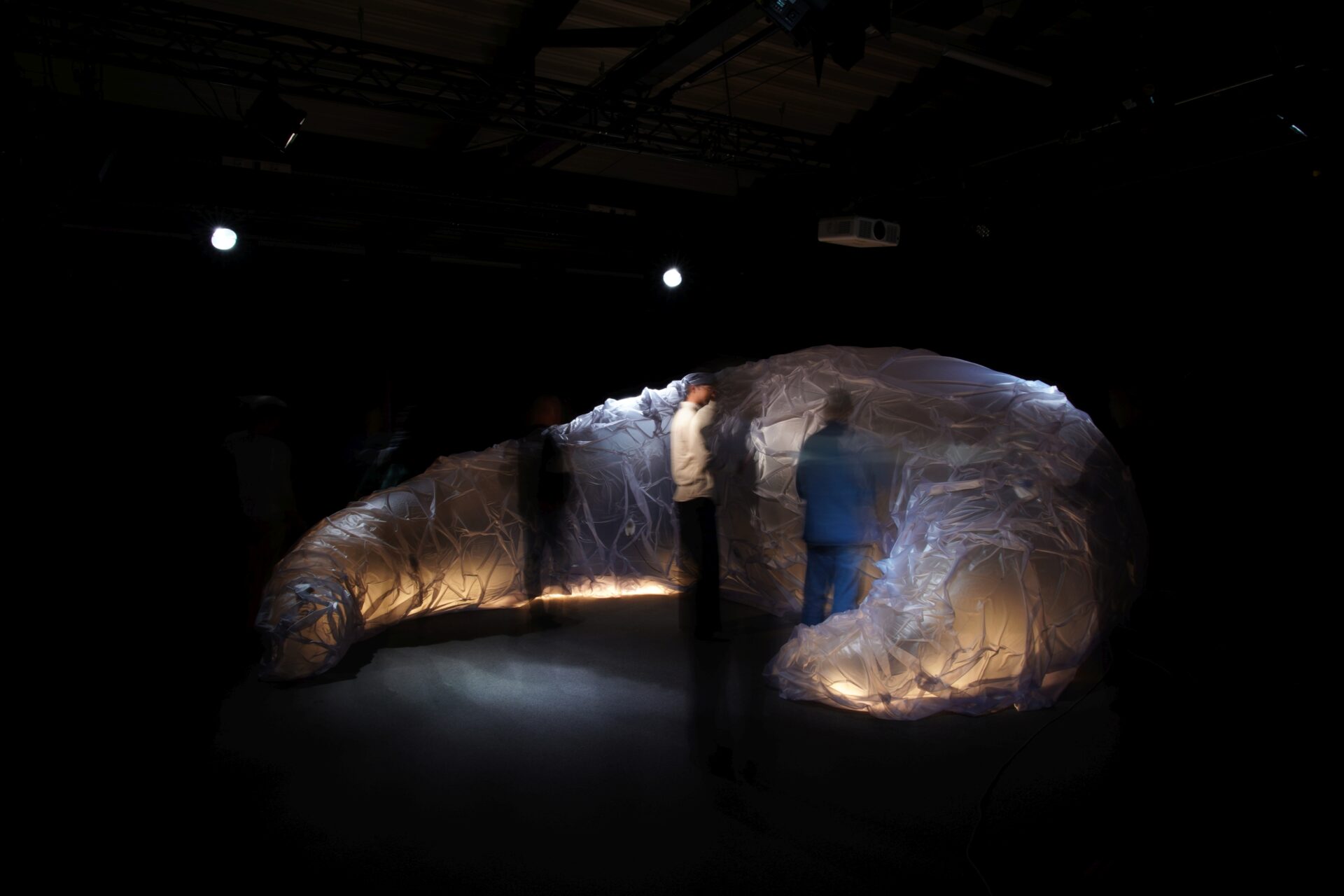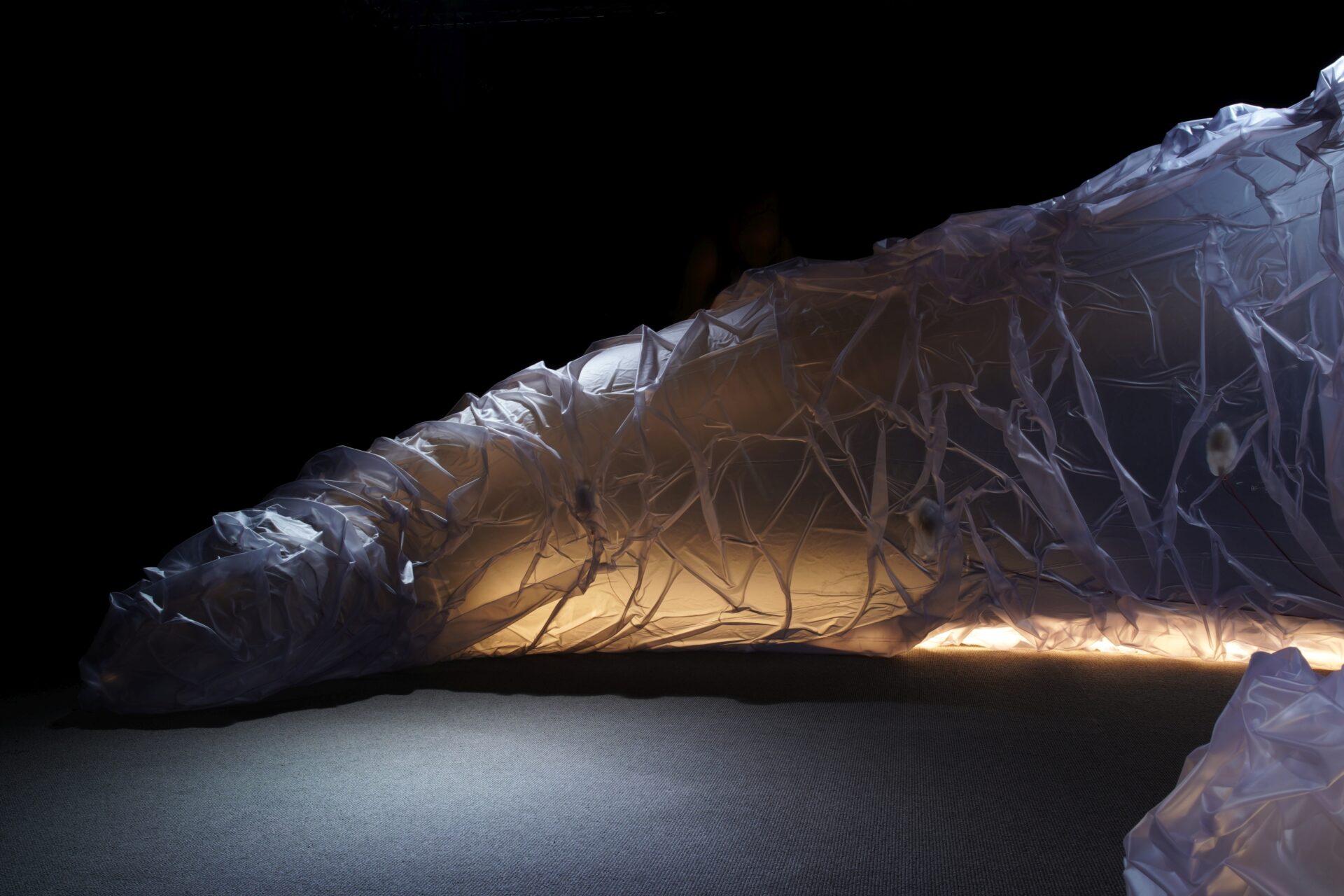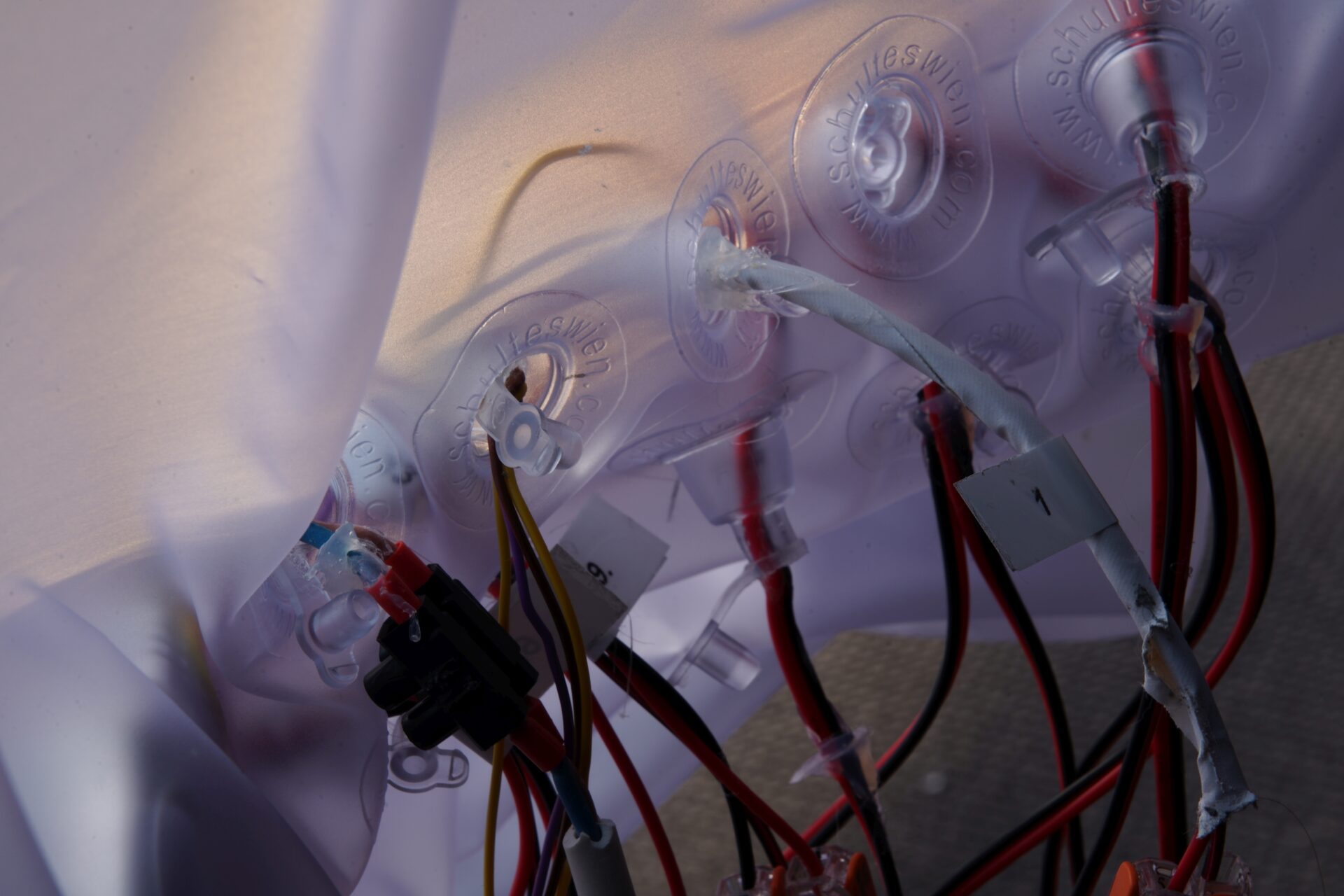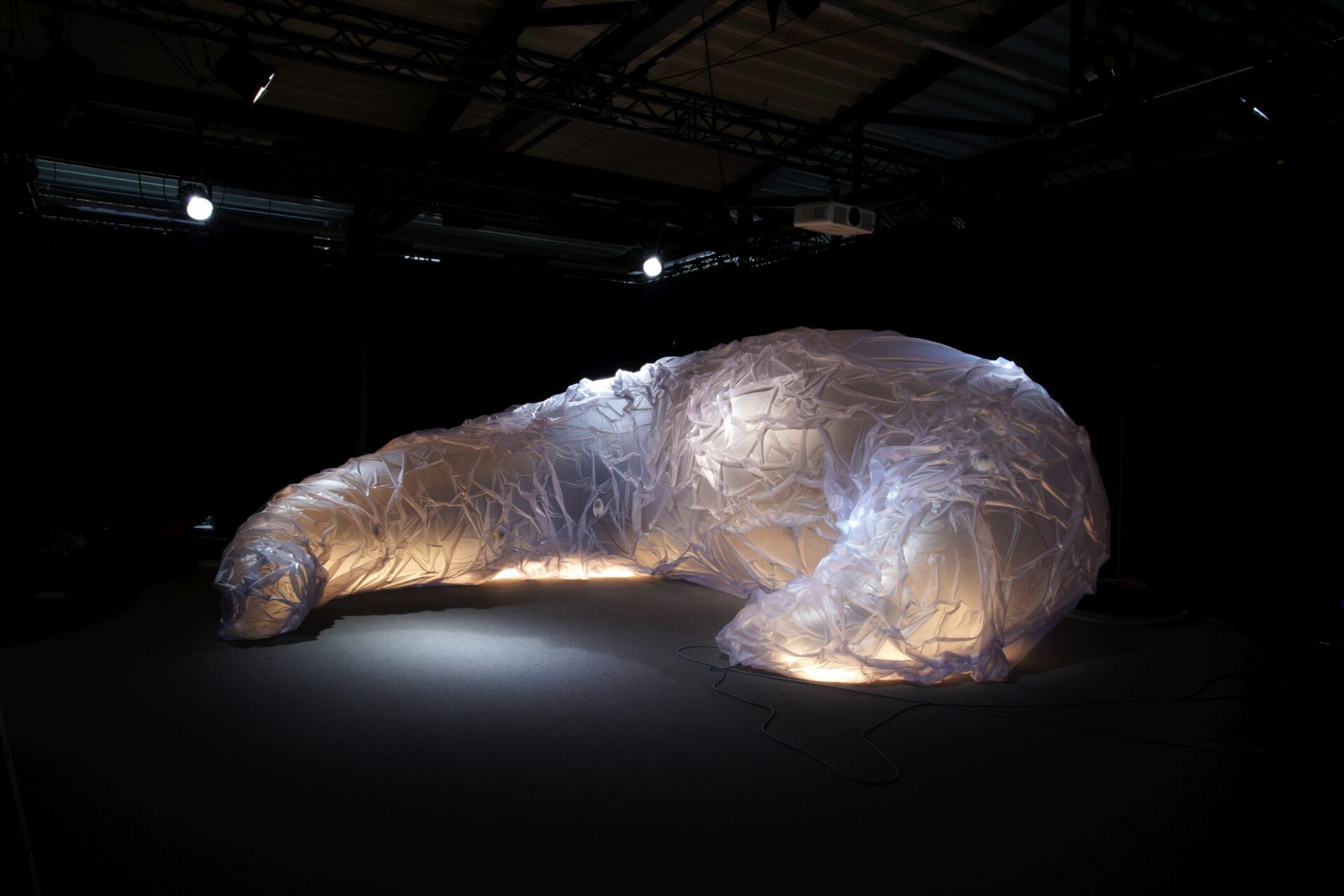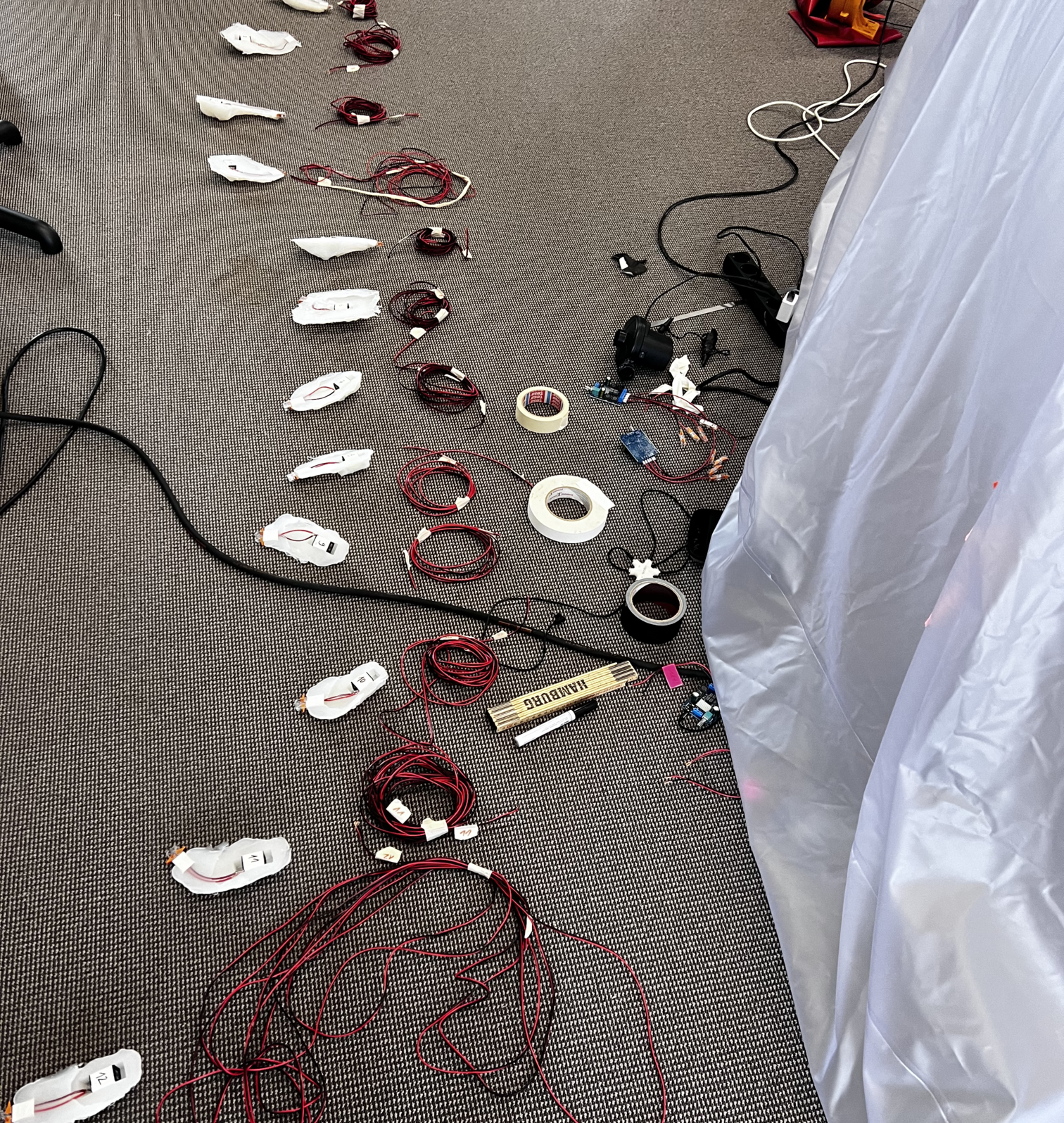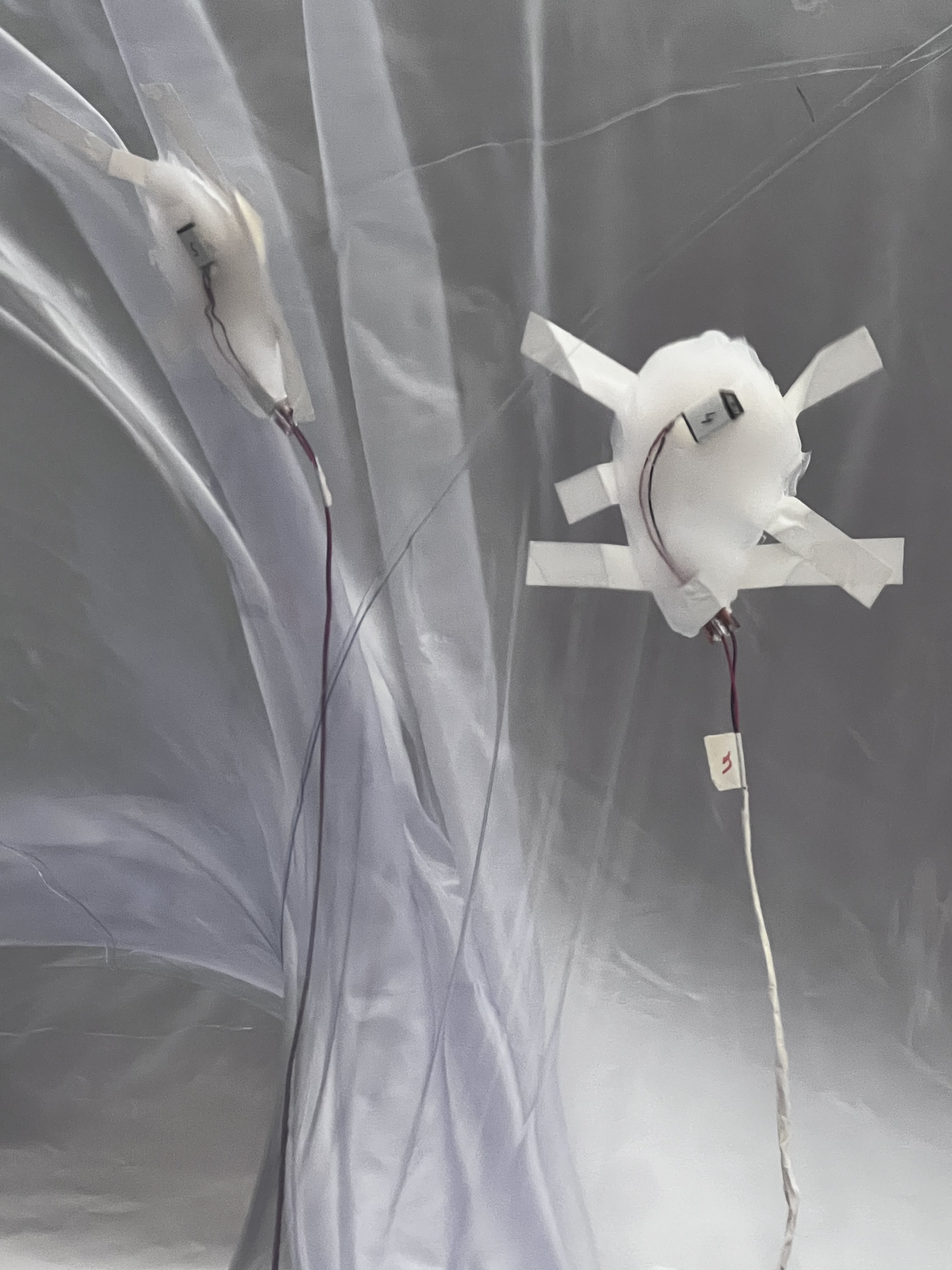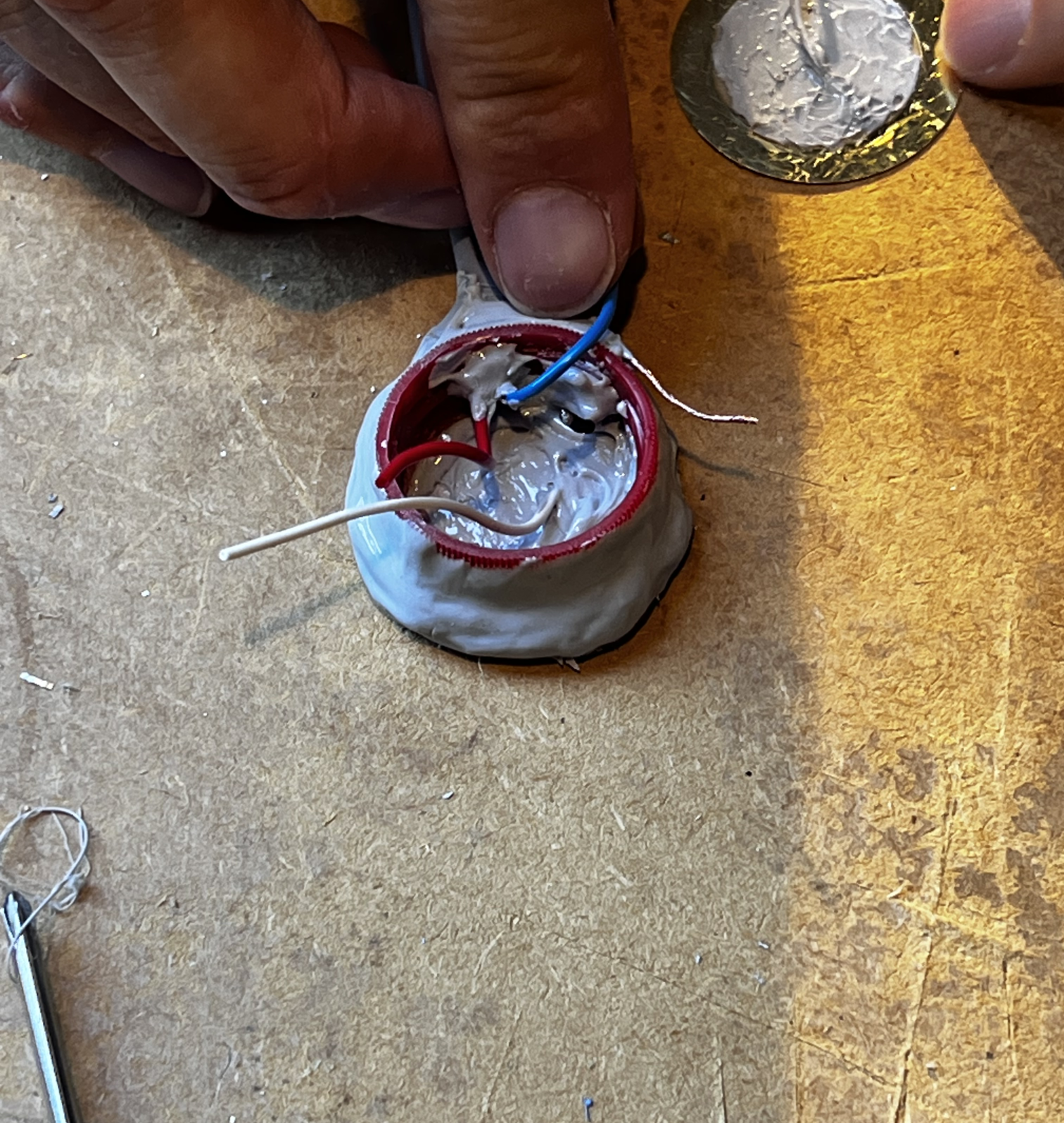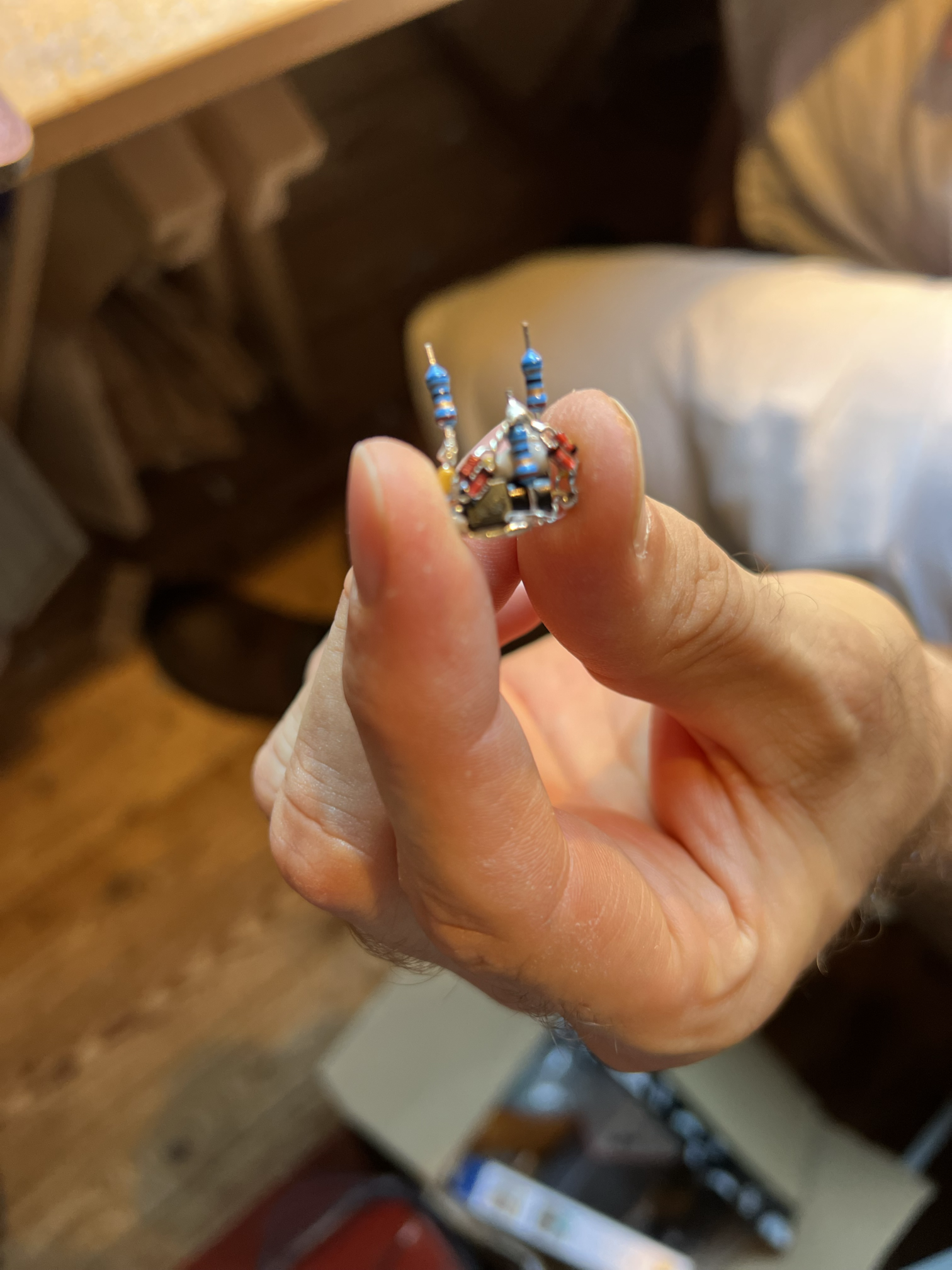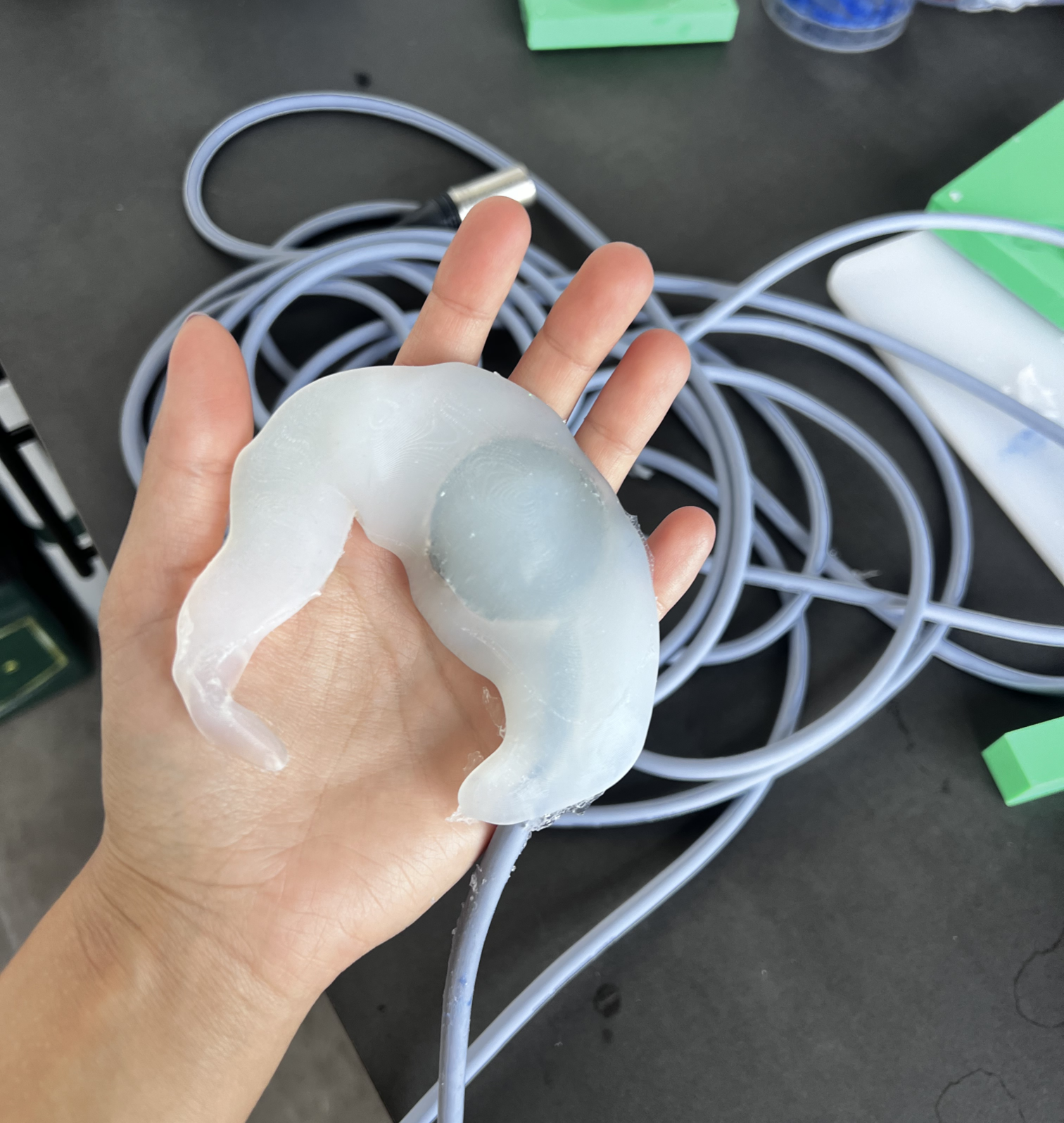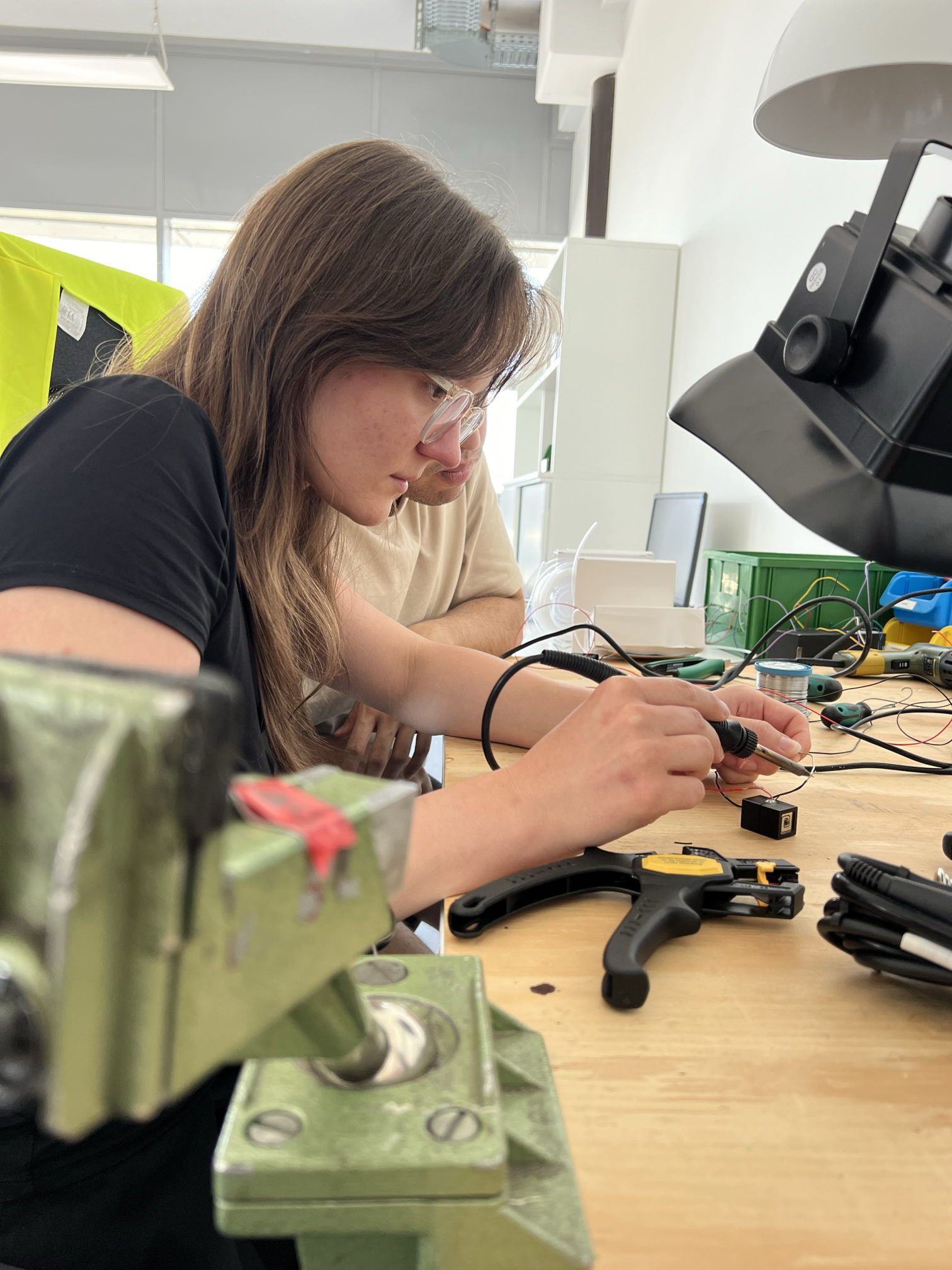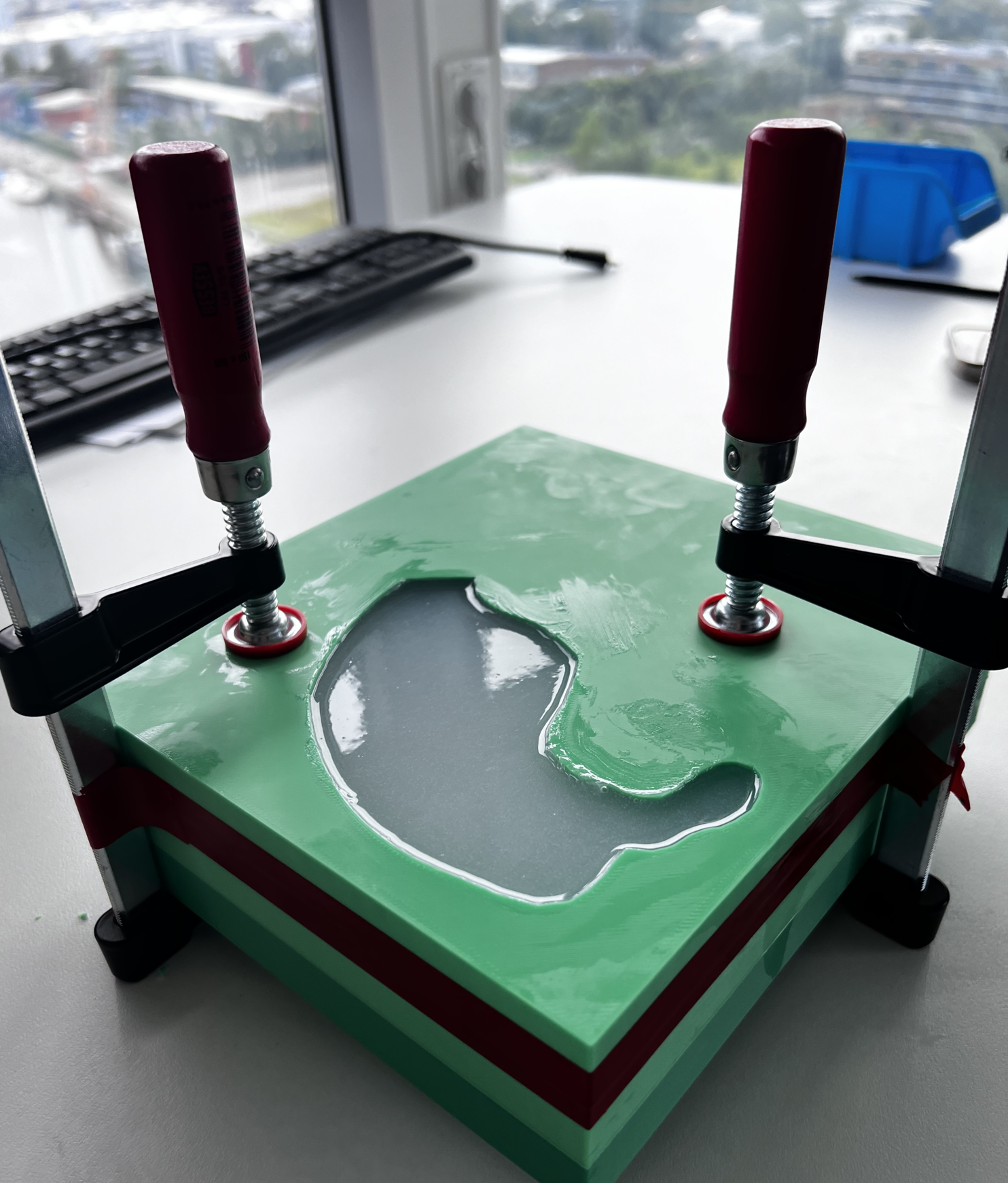+ WHO?
Dr. Lea Luka Tiziana Sikau
ReSilence Partners
+ WHAT?
Explore how metabolic acoustics synchronize gut feelings.
+ HOW?
Study sounds from metabolism and their impact on emotions.
The project explores the sonic, microbial, and sensory dimensions of gut activity as a site for artistic speculation and collective resonance. By amplifying internal bodily sounds through hydrophones and spatial sound technologies, it aims to destigmatize the acoustic ecology of digestion and reinterpret it as a space for connection, transformation, and political reflection. It confronts challenges of bodily invisibility, medical alienation, and sensory erasure in urban life. By embedding these inner processes into spatial audio environments, it asks how bodies ferment in relation to others—biologically, politically, and acoustically.
Everyone emits and hears bowel sounds, yet their metabolic acoustics remain stigmatized and often silenced. stoff wechsel / látková přeměna is a multi-sensory installation exploring the acoustic and haptic qualities of gut feeling. It brings gut sounds into collective resonance, encouraging participants to attune to one another not through breath or heartbeat, but via their gastrointestinal systems—inviting reflection, curiosity, and an experience of the body as an ecological system. Within an inflatable sound bath, participants’ gut sounds are woven into a composition—a gutscape—that affects internal organs and nurtures multi-organ communication. Sonic textures unfold from soft effervescence and expansive howls to crescendos of rumbles, squelches, and breathy, oceanic hums. Chewy, textured cushions allow visitors to press against the sculpture, amplifying their internal rhythms and engaging in a shared resonance. By reclaiming what is often dismissed as private or embarrassing noise, the installation highlights the rich sonic compositions of our gastrointestinal systems. Participants become attuned to their own and each other’s gut sounds, exploring a dialogue beyond words. As the gutscape fades, a heightened awareness of silences and reverberations lingers, leaving a renewed sense of what it means to truly “listen to your gut.”
The installation engages with the urban dimension by inviting visitors in dense city environments to reattune to their internal rhythms, merging private gut space with public acoustic architecture. Urban and intestinal environments are both spaces where solid entities acquire sonic qualities. By attuning ourselves to these sounds, we gain insights into the rhythms, behaviors, and health of these ecosystems. Just as cities resonate with the hum of traffic, sirens, and human activity, the gut produces layered sounds from peristaltic movements, digestive processes, and shifting gases. Both are high-density spaces of sonic information, ranging from subtle, almost inaudible noises to sudden, attention-grabbing events. These soundscapes, often unnoticed, reveal the intricate interplay of organic, mechanical, and human elements. A speculative wearable could harmonize urban and gut sounds, allowing users to immerse themselves in the inner and outer environments simultaneously. Such an apparatus emphasizes that the divide between artificial and natural soundscapes is socially constructed and invites reflection on our place within layered ecosystems. Listening to both urban and intestinal sounds fosters awareness of the body as a threshold circulating between environments. It encourages interaction with the textures and patterns of these systems, highlighting how our inner and outer worlds are interconnected. By tuning in to these sonic layers, users experience themselves as part of both the gut and the city, recognizing the profound relationships between bodily rhythms and urban life.
Collaborations
The project was developed in collaboration with sound engineers, fermentation scientists, and speculative designers. Input from gastroenterology experts and artists with embodied illness experiences informed both the ethical framing and technical interfaces. Workshops and feedback loops were embedded throughout the process.
gut sound, fermentation, spatial audio, body interfaces, sensory politics, urban listening, bioacoustics, multispecies kinship
Device-Making Guides
The methodological approach combined device-making and speculative frameworks to explore how bodily and urban soundscapes might be brought into dialogue. Central to this practice was the development of hydrophone-based sensing systems embedded within soft, inflatable architectures. These inflatables acted as resonant chambers, designed to capture and amplify internal bodily sounds such as peristaltic movements and vibration. By employing hydrophones—transducers capable of detecting vibrations typically inaudible to the human ear—the system translated intimate, visceral processes into audible signals
To create direct bodily-sound interaction, the inflatables were paired with vibroacoustic cushions and silicone membranes. The use of tactile transducers enabled participants to feel the vibrations of their own and others’ bodies. Sound, in this sense, became a multisensory phenomenon, circulating between auditory and haptic registers. This methodological layering emphasized sound as an embodied, shared, and affective encounter that destigmatizes internal rhythms. Spatialization was a further key component of the setup. Gut sounds were diffused across multichannel speaker arrays—either through 32-channel configurations or 3rd-order Ambisonics systems—transforming the intimate acoustics of digestion into immersive sound environments. Through this technique, individual body sounds could resonate within collective space, placing bodily rhythms into polyphonic relation with one another and with the acoustic textures of the environment. In staging these sounds, the methodology destabilized the boundary between inside and outside, private and public.
Design Methods & Frameworks
Speculative Methodologies: Synchronization through Gut Sound
While the technical apparatus enabled the capture and diffusion of bodily acoustics, the research is equally informed by speculative methodologies that ask: what does it mean to listen to the gut alongside the city? The digestive tract and the urban environment are considered as parallel sonic ecologies. Both are high-density acoustic spaces where overlapping sounds communicate the state, rhythms, and health of the system. The gurgling of the intestines finds an echo in the humming of traffic; the abrupt contractions of peristalsis parallel the blare of sirens or the sudden halt of machinery. This speculative methodology treats listening as a mode of attunement across these scales. Device-making here is not only technical but also epistemic: the apparatus becomes a speculative probe that rethinks the body as part of an extended sonic ecology. By externalizing gut sounds and placing them in relation to urban environments, the devices propose new modes of synchronization—cultivating sensitivity to the layered interplay between them.
The approach foregrounds the body as a threshold rather than a boundary. Sounds that usually remain internal and unnoticed are shared and diffused into the urban context. Conversely, the city’s continuous background noise is repositioned as something that can be harmonized with the internal body. Such practices reconfigure the divide between “natural” and “artificial” soundscapes, revealing it as a social construction rather than an ontological truth. Speculative wearables or installations emerging from this methodology could invite participants to experience a double immersion. They tune into the peristaltic rhythms of their own gut while simultaneously registering the acoustic textures of the surrounding environment. This layered listening cultivates an ecological perspective, situating the body as both within and continuous with the urban organism. The act of listening thus becomes a tool for revealing interdependence: the city exists in the guts, just as the body is part of the guts of the city.
Toward a Sonic Ecology of Inner/Outer Worlds
Methodologically, this work combines technical precision with speculative imagination. Hydrophone sensing, vibroacoustic translation, and spatial diffusion provide concrete tools for making gut acoustics perceptible. At the same time, speculative framing situates these tools within broader questions of ecology, embodiment, and perception. Synchronization through gut sound is not a metaphor but a methodological provocation: an invitation to listen across thresholds, to understand both bodies and cities as dynamic sonic ecosystems. When things make noise, they make themselves available to perception. Listening to these noises—whether digestive murmurs or infrastructural hums—becomes a way of knowing, a method for diagnosing health, flow, and imbalance. The research suggests that by learning to listen to the gut and the city together, it becomes possible to develop a more nuanced understanding of how inner worlds and outer environments co-produce one another.
Scenarios / Tests / Exhibitions
The project was presented at the Ligeti Center and BASE Milano, where participants engaged with a multisensory installation. Visitors were invited to lie on vibroacoustic surfaces or immerse their heads into soft silicone membranes infused with sound and vibration. Using hydrophone recordings, they could listen to real-time or pre-recorded gut processes, interwoven with ambient sonic compositions. The installation evoked a fermentation chamber for kinship and acoustic kinesthesia.
Lessons learned:
Audience responses revealed a profound sense of curiosity and vulnerability in listening to their own and others’ internal sounds. The work demonstrated significant potential for music therapy. The integration of body-sound interfaces proved technically effective, while also prompting reflections on consent, data ownership, and intimacy. Multisensory entry points emerged as crucial for fostering inclusive engagement.
Artistic, social, technological, or research-based contributions
Artistically, the project reclaims stigmatized sounds as sites of agency and beauty. Technologically, it bridges spatial sound with visceral sensing. Socially, it opens a space for rethinking health, privacy, and kinship in urban life. In research terms, it addresses Pilot Use Cases on bodily perception and inclusive sonic environments.
Adaptability / interoperability:
The approach is modular and adaptable: hydrophone sensing kits, sound mapping techniques, and fermentation-based sound scripting can be recontextualized for education, therapy, or urban interventions. The installation’s components are scalable and compatible with other sonic and biosensing frameworks.
Impact
The tools and methods supported the transformation of stigmatized bodily functions into aesthetic and affective material. They enabled cross-domain dialogue between sound, health, and public engagement, and provided infrastructure for ongoing sensory and microbial research within the field of art-science.

